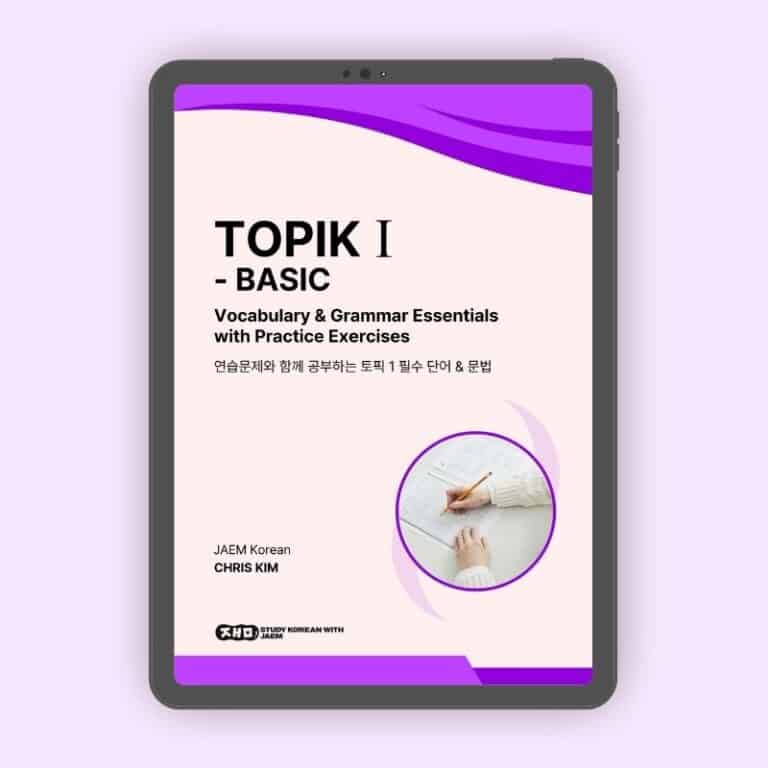
For many beginners preparing for TOPIK 1, distinguishing between -에 and -에서 is a common challenge. Both are location-related particles, but they carry very different meanings. Choosing the wrong one can completely change the sentence.
In this post, we will carefully compare these two grammar points, give clear examples, and show how they appear in TOPIK 1 exam questions.
Grammar Focus – -에 vs -에서
-에
The particle -에 marks a destination or a static location. It is often translated as “to” or “at.”
- Destination (movement verbs): Used with verbs like 가다, 오다, 다니다.
- Location of existence: Used with 있다/없다 to express where something is.
- Time expressions: As covered before, it also indicates time (아침에, 월요일에), but here we focus on place.
예문:
- 저는 학교에 갑니다.
- 가방이 책상 위에 있습니다.
- 친구가 집에 있어요.
👉 Key Point: Use -에 for destination or where something/someone exists.
-에서
The particle -에서 marks the place where an action happens or the starting point of movement.
- Action location: Used with action verbs like 공부하다, 먹다, 운동하다.
- Starting point: Indicates the place from which something begins.
- Nuance: Focuses on what is happening inside a place, rather than just pointing to it.
예문:
- 저는 도서관에서 공부합니다.
- 동생이 방에서 노래를 부릅니다.
- 버스는 서울에서 출발합니다.
👉 Key Point: Use -에서 when something happens inside a place or as the starting point.
How These Grammar Points Appear in TOPIK 1
In TOPIK, learners are often asked to distinguish between static/existence versus action. Knowing the verb is the fastest way to choose between -에 and -에서.
Example Question 1 (Reading/Grammar)
저는 학교( ) 공부를 합니다.
① 에
② 에서
③ 을
④ 로
👉 Correct answer: ② 에서 (Action: studying happens at school.)
Example Question 2 (Reading/Grammar)
지금 책이 가방( ) 있습니다.
① 에
② 에서
③ 을
④ 로
👉 Correct answer: ① 에 (Existence: the book is inside the bag.)
Example Question 3 (Listening/Integrated)
여: 주말에 어디에 가요?
남: 저는 친구 집( ) 놀 거예요.
① 에
② 에서
③ 을
④ 로
👉 Correct answer: ② 에서 (Action: playing happens inside the friend’s house.)
Study Tip for TOPIK Learners
- Check the verb:
- Movement verbs (가다, 오다, 다니다) → -에
- Existence verbs (있다, 없다) → -에
- Action verbs (먹다, 공부하다, 운동하다) → -에서
- Remember:
- -에 = “to/at” (destination, location, existence)
- -에서 = “at/from” (action, starting point)
예:
- 저는 도서관에 갑니다. (Destination)
- 저는 도서관에서 책을 읽습니다. (Action at a place)
Conclusion
The difference between -에 and -에서 is one of the most important basics in Korean grammar. By paying attention to the verb in the sentence, you can easily decide which particle to use. This knowledge is frequently tested in TOPIK 1, so mastering it will greatly improve your score.
👉 Want more practice? Check out our full TOPIK grammar series!




















Responses